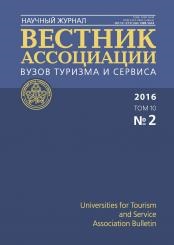The article discusses the elements of educational continuity and production technology related scientific outlook on these processes in the past and the modern world. Noted that Conceptual innovations in science and technology contribute to the emergence of the scientific and technical world of active development of modern analytical technologies of a new type. Relying on new trends in science, engineering and technology is considered one of them, the most relevant in the present — nanotechnology. It is noted that in the scientific and technical world appear and actively develop overtime analysis of a new type of technology, the theory of which is based on the provisions of the adaptive logic. Touched on the importance of using artificial neural networks to solve applied problems. The importance of such technologies highlighted by the fact that they will contribute to the solution of ill-posed problems that often arise in practical human activity. The practical results of the adaptation of technical and technological solutions to the conditions of their functioning. Introduces the algorithm of group technology manufacturing processes. It is noted that modern educational technologies based on dichotomous methods and adaptive learning systems. Stressed the importance of the workplace and in various industrial applications of intelligent neural network controller that can detect potentially dangerous situations to notify people about them and take adequate and, most importantly, timely.
adaptive logic, divisive method, educational technology, production technologies, nanotechnologies.
В последние годы появились новые направления в науке, технике и технологии, одними из наиболее заметных являются нанотехнологии. Это, безусловно, отразилось на образовательных процессах в высших учебных заведениях [14]. Грандиозность перспектив результатов развития этой области науки и техники неоспорима. Нанотехнологии, вероятно, определят развитие в настоящее время практически всех составляющих современной цивилизации: освоение космоса, совершенствование техники, медицины, и т. д.
Концептуальные нововведения в науке и технике, безусловно, способствуют появлению в научном и техническом мире активного развития современных аналитических технологий нового типа [2; 3; 13]. В их основе лежат технологии искусственного интеллекта, которые имитируют процессы природные, такие, например, как деятельность нейронов мозга. Все большее распространение в прикладных задачах находят искусственные нейронные сети (ИНС).
Искусственные нейронные сети в сфере автоматизированного управления применяются в задачах идентификации объектов, в алгоритмах прогнозирования и диагностики, и, кроме того, для синтеза оптимальных автоматических систем регулирования (АСР). Для их воплощения на основе использования искусственных нейронных сетей в настоящее время интенсивно развивается создание нейрочипов (НЧ) и нейроконтроллеров (НК).
Искусственные нейронные сети являются в определенном смысле имитатором мозга, который обладает способностью к ориентации и обучению в условиях неопределенности. ИНС имеют сходность с мозгом в двух моментах. Искусственные нейронные сети получают знания в процессе обучения, а для сохранения полученных знаний употребляют значения коэффициентов межнейронных связей, которые называют синаптическими весами.
1. Arkhipova T.N., Suchilin V. A. Metod modelirovaniia shveinykh izdelii po analiticheskim zavisimostiam [Garment analytical-dependence modeling]. Shveinaia promyshlennost’ [Garment Industry], 2009, № 5.
2. Kolomeitseva M. B. Sintez adaptivnoi sistemy upravleniia na baze nechetkogo reguliatora dlia mnogomernogo dinamicheskogo ob’’ekta [Synthesizing the adaptive control system on the basis of the fuzzy controller for multidimensional dynamic objects]. Pribory i sistemy. Upravlenie, kontrol’, diagnostika [Devices and systems: Operation, control, diagnostics]. 2002. № 3. pp. 34-37.
3. Kukushkina V. V. Organizatsiia nauchno-issledovatel’skoi raboty studentov (magistrov) [Organising graduate students’ scientific research], uchebnoe posobie [Guide-book]. Moscow: INFRA-M, 2012. p. 265.
4. Polozhenie ob uchebno-metodicheskom komplekse distsiplin [Subject Teaching Materials Regulations]. Chelyabinsk: ChPI, 1981.
5. Sazonov A. Sozdaem uchebno-metodicheskii kompleks [Creating teaching materials]. Vestnik Vysshei Shkoly [Higher School Herald], 1978, № 4.
6. Skvirskii V. Ia. Uchebno-metodicheskii kompleks distsipliny [Subject teaching materials]. Metodicheskie ukazaniia po razrabotke i ispol’zovaniiu [Methodical instructive regulations on preparation and use]. Moscow: MADI, 1982. p. 80.
7. Suchilin V. A. Metod gruppovoi tekhnologii pri proektirovanii i organizatsii raboty shveinykh gibkikh proizvodstvennykh system [Group technology as applied to engineering and managing clothing FMS]. Sbornik nauchnykh trudov «Voprosy inzhenernogo proektirovaniia tekhniki i tekhnologii servisa s primeneniem EVM» [A collection of articles «Engineering and designing computer-operated service devices and technologies»]. Moscow: GASBU Publ, 1995. pp. 31-35.
8. Suchilin V. A., Gribut I.E., Primenenie magnitnoi zhidkosti v tekhnologiiakh servisa transportnykh sredstv [Ferrofluid application to transport facilities servicing technologies]. Elektrotekhnicheskie i informatsionnye kompleksy i sistemy [Elecrical and information complexes and systems]. 2011. № 4, vol. 7. pp. 41-46.
9. Suchilin V. A. Ispol’zovanie magnitnoi zhidkosti dlia smazki i germetizatsii uzlov tekhnicheskikh sredstv bytovogo obsluzhivaniia [Ferrofluid as a lubricant and leakproof of junction points in utility devices]. Elektrotekhnicheskie i informatsionnye kompleksy i sistemy [Elecrical and information complexes and systems]. 2012. № 2.
10. Suchilin V. A. Metod povysheniia effektivnosti gasheniia vibratsii v avtotransportnoi tekhnike [Optimizing absorbing of vibration in automotive materiel]. Elektrotekhnicheskie i informatsionnye kompleksy i sistemy [Elecrical and information complexes and systems]. 2012. № 3, vol.8.
11. Suchilin V. A. Chelnok shveinoi mashiny [Shuttle]. Patent RF № 2070239. Publ. 10.12.1996. Patent Office Journal № 34.
12. Suchilin V. A. Maneken dlia primerki odezhdy [Tailor’s dummy]. Patent RF № 2387352. Publ. 27.04.2010 Patent Office Journal № 12.
13. Uskov A. A. Empiricheskii printsip sinteza nechetkikh logicheskikh reguliatorov [Synthesizing the fuzzy controllers: Empirical principle]. Pribory i sistemy. Upravlenie, kontrol’, diagnostika [Devices and systems: Operation, control, diagnostics]. Moscow: Nauchtekhlitizdat, 2004. № 1. pp. 16-18.
14. Federal’nyi gosudarstvennyi obrazovatel’nyi standart vysshego professional’nogo obrazovaniia po napravleniiu podgotovki 151000 Tekhnologicheskie mashiny i oborudovanie (kvalifikatsiia (stepen’) «magistr») (Utverzhden prikazom Ministerstva obrazovaniia i nauki RF or 9 noiabria 2009 g. N539) [Federal state educational standard of the higher professional education in the direction of preparation151000 Production machines and machinery (qualification (degree) «master»), enacted by the Ministry for Education and Science of the Russian Federation on November, 9, 2009, N 539).





